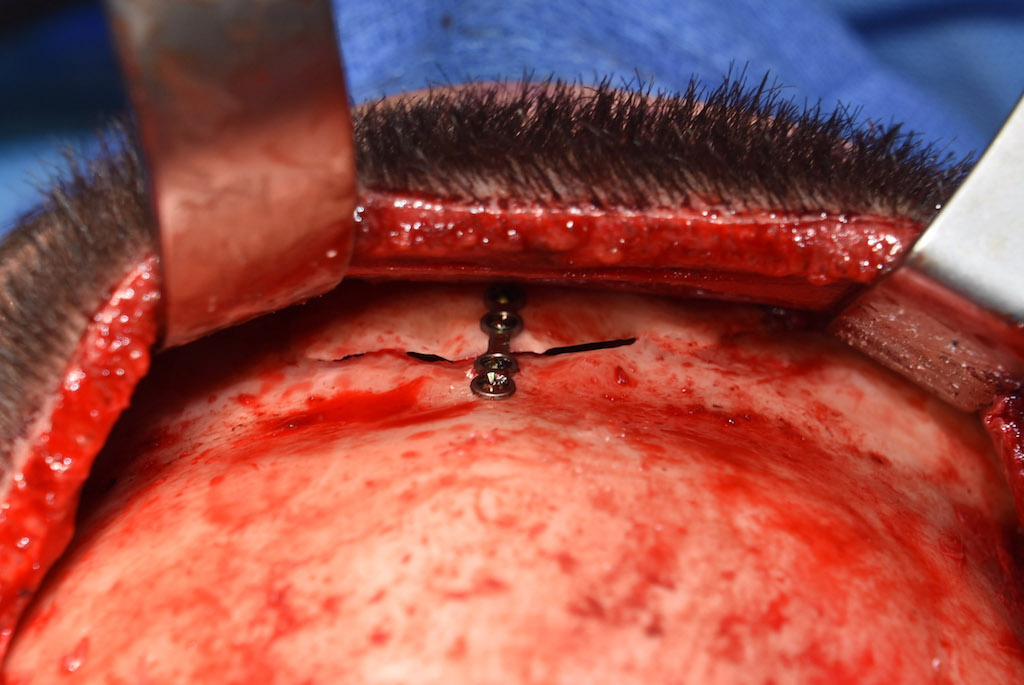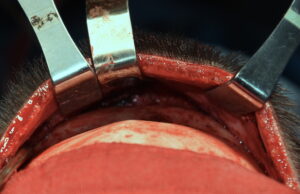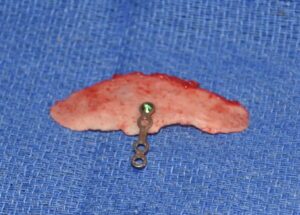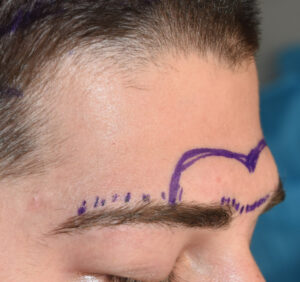Background: While men naturally have more visible brow bones due to an increased frontal sinus development, a few men will develop a larger brow bone protrusion than normal. This can be exacerbated in some by a more sloped forehead that lies above it. There is no specific measurement of how much brow bone protrusion is acceptable, it is either aesthetically bothersome or is not.
Brow bone reduction is the only treatment for the excessively prominent brow bone in men. A burring technique is rarely effective as the bone thickness of the anterior table of the frontal sinus does not permit an adequate amount of protrusion reduction. Only a bone flap removal, reshaping and replacement technique can ever result in an adequate male brow bone reduction in my experience.
But the key consideration in the surgical consideration of male brow bone reduction is not the reshaping of the bone, but whether the need for a scalp incision to do so is a worthwhile aesthetic tradeoff. The male scalp hair density, or its presence at all, weighs heavily into whether the operation is considered. The traditional coronal scalp incision is believed to be the only approach that can provide adequate exposure to perform the procedure.
Case Study: This young male had long been bothered by his prominent brow bones. He had a very good frontal hairline and good overall scalp hair density. But he wore a short hairstyle and I preferred not to use a coronal scalp incision. (which I rarely use anyway)
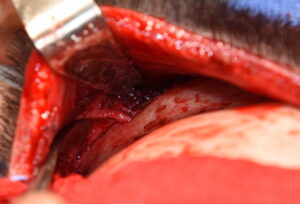
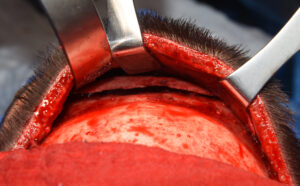
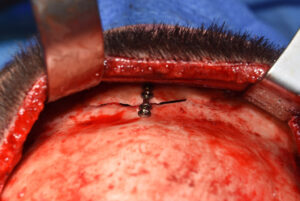

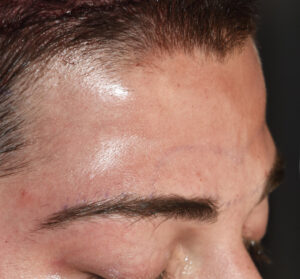
The use of a full coronal scalp incision is not necessary for the male brow bone reduction. Provided the incision is placed anteriorly enough it is not necessary to extend it inferiorly along the sides of the head to turn the flap down. This superior tunnel technique can provide enough working room to satisfactorily perform the procedure.
Case Highlights:
1) Male brow bone reduction with bone flap setback is traditionally believed to only be able to be done through a full coronal scalp incision.
2) A limited anterior or frontal hairline incision can be used to successfully remove and reshape the anterior table of the frontal sinus as well as burring reduction of the lateral brow bones.
3) A limited scalp incision is an important consideration in men where incisions that extended down onto the temporal area are prone to widening and visibility.
Dr. Barry Eppley
Indianapolis, Indiana

